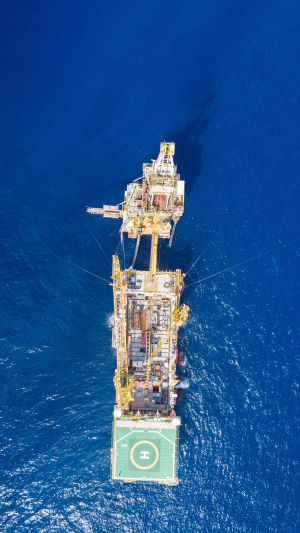Offshore drilling, also known as deepwater drilling or offshore exploration, is a crucial process that enables the extraction of valuable resources beneath the ocean floor.
It involves the use of specialized equipment and advanced technologies to reach vast reserves of oil and natural gas hidden beneath the Earth's surface.
Offshore drilling is an engineering marvel that allows access to oil and gas reserves located in the seabed. It begins with the identification of potential drilling sites through extensive geological surveys. Once a promising location is found, a drilling rig is positioned above the seabed. The rig is equipped with a drill string that consists of a drill bit, casing, and drilling fluids.
The drill bit rotates and penetrates the seabed, reaching the reservoirs thousands of feet below. Drilling fluids, commonly known as "mud," are circulated to cool the drill bit and carry rock cuttings to the surface.
Offshore drilling plays a vital role in meeting the world's energy demands. It allows the extraction of substantial reserves of oil and natural gas, reducing dependence on imports and bolstering energy security.
Offshore fields often hold vast reserves, making them economically lucrative. Additionally, offshore drilling creates employment opportunities and stimulates economic growth in coastal regions. It also contributes to technological advancements, as companies invest in developing sophisticated equipment and innovative drilling techniques.
While offshore drilling offers various benefits, it also raises environmental concerns. The extraction process poses a risk of oil spills, which can have catastrophic consequences for marine ecosystems and coastal communities.
Stringent safety measures and monitoring systems are employed to mitigate such risks, including blowout preventers and remote-operated vehicles. Efforts are also underway to develop safer drilling techniques and effective spill response strategies.
Moreover, offshore drilling operations can disrupt marine life, including fish, mammals, and seabirds. Noise pollution, drilling mud discharge, and the construction of drilling platforms can harm marine habitats.
To minimize these impacts, environmental impact assessments are conducted before drilling operations commence. Additionally, industry regulations and environmental legislation strive to protect sensitive areas and ensure sustainable practices.
The future of offshore drilling is influenced by various factors, including technological advancements and evolving energy landscapes. The industry is increasingly adopting digitalization, automation, and robotics to enhance efficiency, safety, and environmental performance. Moreover, renewable energy sources are gaining prominence, leading to a gradual shift away from fossil fuels. However, offshore drilling will continue to be essential in the transition period as alternative energy sources develop further.
Offshore drilling enables the exploration and extraction of valuable resources beneath the ocean floor. It has played a significant role in meeting global energy demands, driving economic growth, and fostering technological innovation.
While environmental concerns persist, stringent safety measures and regulations strive to minimize the impact on marine ecosystems. As the world transitions to cleaner energy sources, offshore drilling will adapt and coexist with renewable alternatives, ensuring a sustainable and secure energy future.





